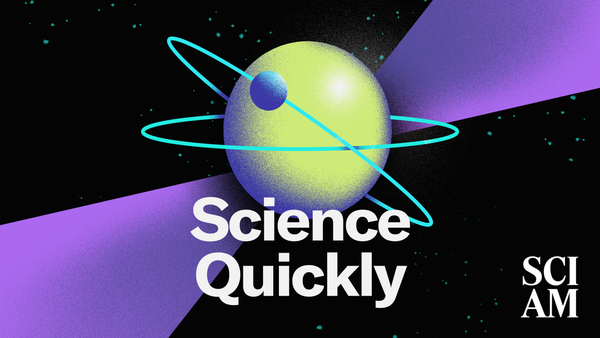www.scientificamerican.com
February 4, 2025Avoiding Outrage Fatigue while Staying InformedOutrage fatigue can wear us downbut we can take care of ourselves in an onslaught of overwhelming news. Anaissa Ruiz Tejada/Scientific AmericanSUBSCRIBE TO Science Quickly[CLIP: Theme music]Rachel Feltman: For Scientific Americans Science Quickly, this is Rachel Feltman.No matter what you believe, Im willing to bet youve been feeling a lot of outrage lately. To me personally, it feels unavoidable: I cant look down at my phone or glance up at a TV without seeing something that makes me upset. And thats really exhausting. But when outrage is everywhere, what can we do to keep it from getting to us?On supporting science journalismIf you're enjoying this article, consider supporting our award-winning journalism by subscribing. By purchasing a subscription you are helping to ensure the future of impactful stories about the discoveries and ideas shaping our world today.Here to talk to us about fighting so-called outrage fatigue is Tanya Lewis, a senior editor covering health and medicine at Scientific American.Tanya, thanks for joining us today.Tanya Lewis: Thanks so much for having me.Feltman: So you recently wrote about this phenomenon called outrage fatigue. Could you tell us what that is?Lewis: Sure, so outrage fatigue is kind of an informal concept, which basically refers to repeatedly experiencing perceived moral transgressions and feeling fatigued by them. So what that basically means is just, you know, you see something, youre outraged by it, and over time you just become kind of numb to it.Feltman: Sounds relevant to [laughs], to many of our lives.Lewis: Yes [laughs].Feltman: What do researchers know about outrage in general?Lewis: So outrage fatigue itself hasnt been that well-studied, but outrage in general has been studied, and people have found that, actually, outrage can be useful. It actually can help you identify a problem and react to it. But it can also be harmful if youre experiencing it all the time and become overwhelmed by it.Theres actually a recent study by William Brady, an assistant professor of management and organizations at Northwestern Universitys Kellogg School of Management. He and his colleagues found that outrage actually helps misinformation spread more widely, especially online on social media. So the upshot of this is that when you have too much outrage, people can actually withdraw from public spaces or virtual places like social media.Feltman: Yeah, and what is it about outrage that helps misinformation spread?Lewis: So I think part of it is the fact that its more engaging. It, you know, activates your emotions, and so people are more primed to respond to that. As we all know, if youve ever spent time on social media and social networks, we always see the most kind of inflammatory content because thats what gets retweets or clicks and the algorithms are amplifying that.Feltman: Right, and more broadly, you know, what is it about the times were living in that makes outrage so hard to avoid?Lewis: So were living in a particularly polarized time, which I think is not a surprise to anybody. If you have been online lately, on Twitter or Facebook or TikTok or any other social media, youve probably seen people yelling about something or other. And this just really has been accelerating, I guess, in the last few years because of our political polarization and other world events.As I was saying earlier some amount of outrage is actually normal and healthy, but studies have shown that the majority of outrage posts on social media are actually driven by a small minority of users who are veryyou know, they feel very strongly about something, and that can actually turn other people off of participating in the conversation.Feltman: Yeah, so social media is a big part of this, you know, both amplifying it and giving a platform for people who are feeling this outrage. Other than just making us feel bad, what does outrage fatigue do to a person?Lewis: So the real danger is that we become apathetic, and if were exposed to something all the timewhether its through social media or even traditional news sources like cable TVif its constantly telling us to be outraged, eventually were gonna be less responsive and were gonna kind of pull back. So instead of, like, channeling that outrage into something useful, many people sort of feel exhausted and burned out, and they just dont want to take action at all.And this is actually a problem because politicians can take advantage of that and sort of manipulate people. As weve seen over the last few decades some of the big social issues like abortion, gay rights, critical race theory, these have all been used as kind of wedge issues to convince people to vote in ways that might be against their own self-interest because theyre just so outraged about this one particular issue.Feltman: Yeah, so definitely worth avoiding. What can we do to accomplish that?Lewis: Right. That was my question, too. You know, a couple of things: one is that we can just sort of limit how much media we consume. As somebody who is a member of the media, you know, this might sound strange, but I think if youre feeling constantly overwhelmed and outraged by something, if you consume less of it, thats probably a good thing.But it doesnt mean you should totally sort of ignore whats happening. When I talked to William Brady, he said that, you know, one of the ways you can kind of have an impact without just being overwhelmed is to get involved in local politics or local issues, you know, in your community because you can actually have a much greater impact on a local level, usually, than a national level anyway. So rather than just, like, retweeting that most outrageous post that you see, you know, its better to get involved with real people and kind of have a dialogue with them.Feltman: Yeah, find some mutual aid groups ...Lewis: Exactly.Feltman: Find stuff you can actually do when youre not doomscrolling and hopefully [laughs] ...Lewis: Yes [laughs].Feltman: Do less of the doomscrolling, too. And did he have any advice for sort of recovering from outrage burnout once its hit you?Lewis: Gosh, that is a good question. You know, its not something I specifically asked Dr. Brady about, but I think, just from my own experience, like I said, you know, pulling back a little bit from some of the media consumption and, you know, just maybe limiting yourself to checking the news a couple times a day instead of, like, every hour or, you know, getting those alerts on your phone all the time. If someone is posting stuff that makes you furious all the time, maybe dont follow them [laughs]. And, yeah, get outside, get in natureyou know, the usual things that can kind of reset your brain and make you feel, you know, more calm.[CLIP: Theme music]Feltman: Yeah, maybe easier said than done, but really good advice. Thanks so much for coming on to chat with us, Tanya.Lewis: Thanks so much. Its always great being on here.Feltman: Thats all for todays episode. If you want to learn more about outrage fatigue, you can read Tanyas full interview with Dr. Brady on ScientificAmerican.com. Well be back on Friday to unpack how President Trumps new administration is impacting health and science.Science Quickly is produced by me, Rachel Feltman, along with Fonda Mwangi, Kelso Harper, Madison Goldberg and Jeff DelViscio. Todays episode was reported and co-hosted by Tanya Lewis. Shayna Posses and Aaron Shattuck fact-check our show. Our theme music was composed by Dominic Smith. Subscribe to Scientific American for more up-to-date and in-depth science news.For Scientific American, this is Rachel Feltman. See you next time!












